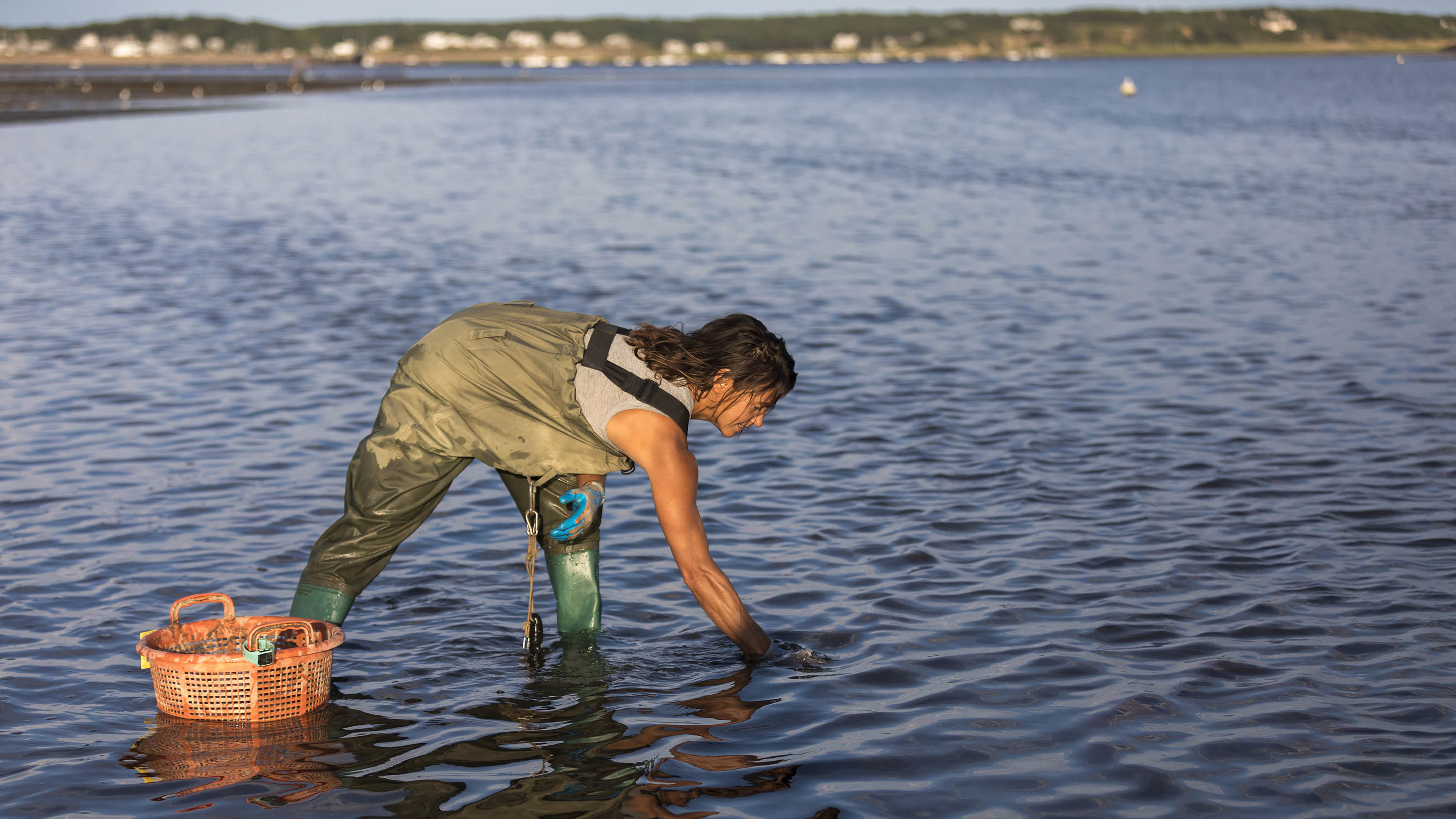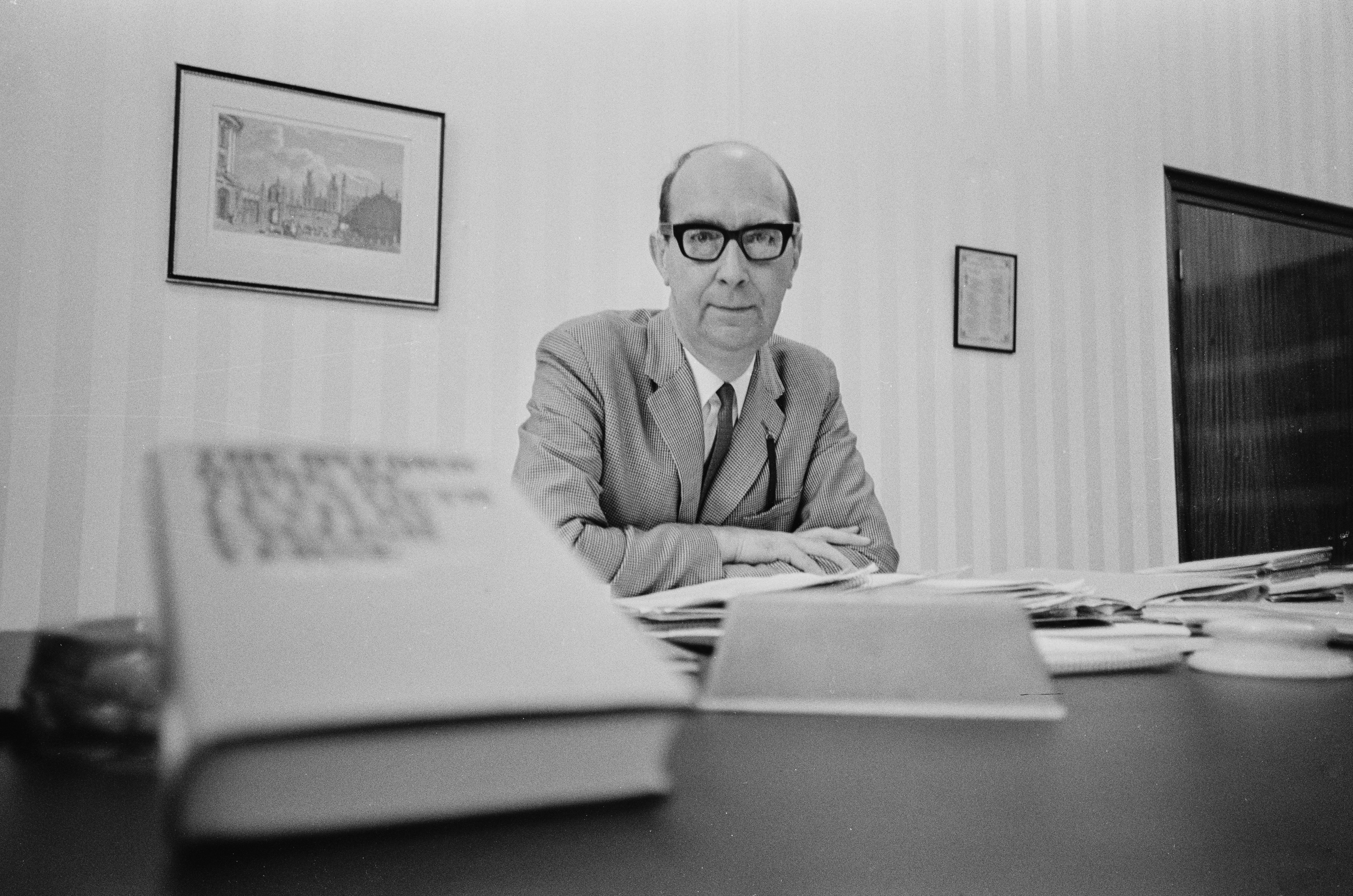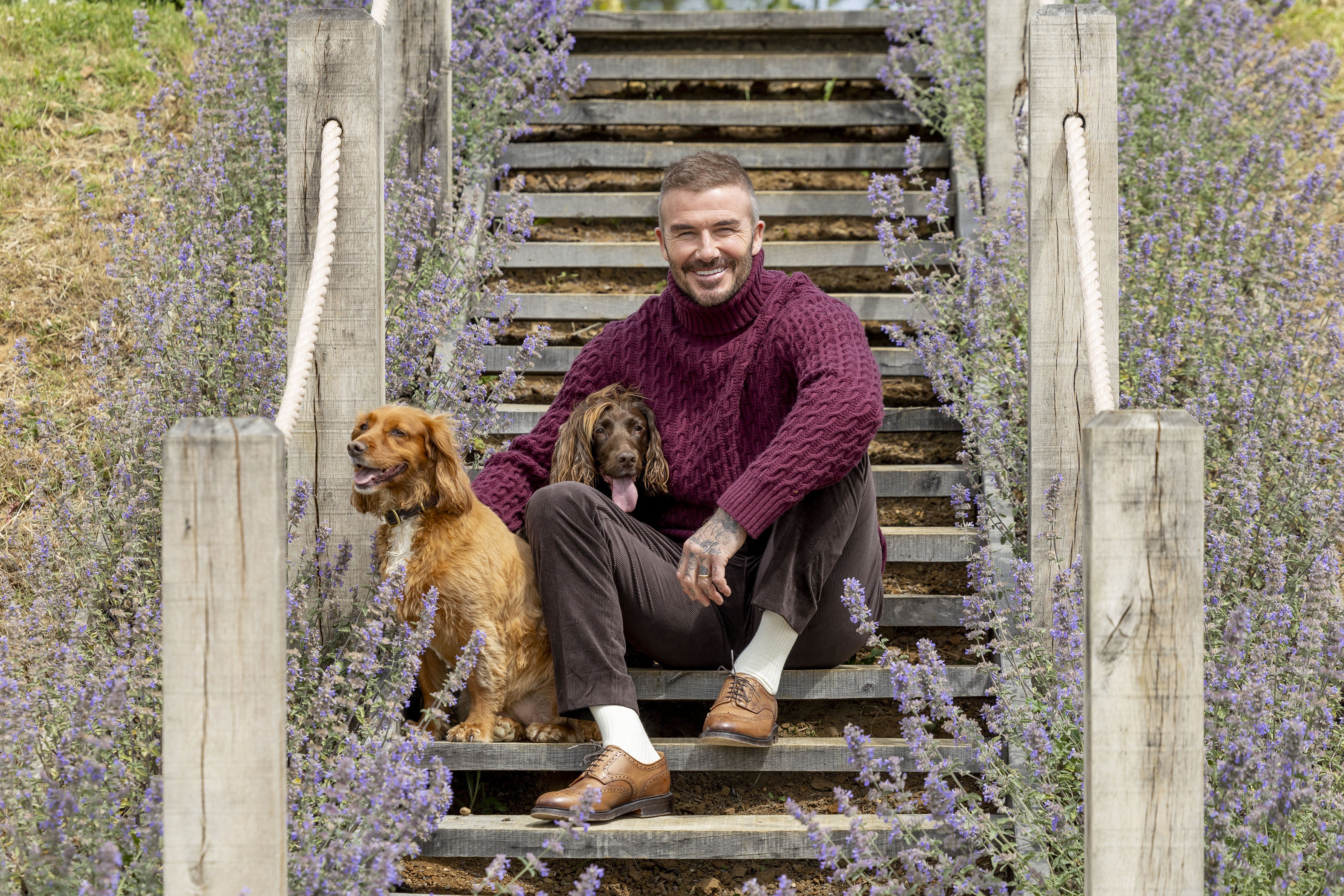Food with a pinch of salt: The crops we can harvest from the sea
Filling, rewarding and nutritious, vegetables and plants grown in saline environments — whether by accident or design — have plenty of potential. Illustration by Alan Baker.


Wrung out from reedy water marshes by Charles I and his Dutch advisors, the fertile farmland of the Fens may, one day, be reclaimed by the sea. These beautiful lowlands, scored with glistening dykes, support precious flora: fen violets, fen orchids and fen sedge, once used in thatching. However, they are also threatened by floods and rising sea levels. In this, they are not alone. The River Severn and the Thames estuary, with their rich birdlife, and the wildflower meadows and wetlands of south Kent are among a long list of British hotspots at risk of salination.
As an island, wind-blown salt has always sprayed our coastline. However, salt’s intrusion into our groundwater and soils is an emerging threat that is caused by climate change, cautions Iain Gould. An associate professor in soil science at the University of Lincoln, Dr Gould is undertaking research into coastal agricultural systems and threats from salinity. ‘In parts of the eastern UK, in farming areas around the coast, at certain times of the year they face irrigation restrictions and the only water they’ve got access to is too salty,’ he states, adding that, eventually: ‘We might be challenged to find enough water in those areas and [have to consider] whether or not we use some of the slightly salty water.’
His team’s research into the extent to which our soils are already salinated is still in process. ‘I really don’t know what we’re going to see,’ he admits, acknowledging that exploring saline agriculture is a sensible step in adapting to climate change. He goes on to explain that the repercussions of not doing so could be felt in the decades to come, ‘when we’re really short of fresh water’.

Much of Dr Gould’s ongoing research — to see whether crops, such as potatoes, can tolerate slightly saltier irrigation water and what this does to the soil biology — has been focused on the Wash in Lincolnshire. ‘[Here] you’ve got the perfect storm of very high-value crops and challenges for water resources,’ he explains. ‘In these really rich, grade-1 silt soils, within four or five yards, you get salt water.’ Soil damaged by salt becomes ‘a consolidated clump, so it’s not great for root growth,’ he continues, adding that, although rain will flush some of the salt out, it can take about seven years to remediate.
A taste of the sea
A feast of flavourful plants clings to our coastline’s saltiest surfaces. Here are three of forager Mark Williams’s favourite finds:
• Sea sandwort (Honckenya peploides)
This pointy-leaved succulent with its two-way symmetry ‘always gets squeals of approval’ from first-timers, discloses Mr Williams, who describes it as having ‘the texture of sugar-snap peas, with a hint of sourness like sorrel’. Found on beaches a little above the high spring tideline and forming a shallow carpet that can run for miles, sea sandwort is more often walked over than tasted. It’s at its sweetest in spring and can be enjoyed raw, pickled, steamed or stir-fried—however, blow the sand out of it first
• Sea aster (Aster tripolium)
Sea aster, harvested between May and early October, is a mauve-petalled daisy that grows abundantly in saltmarsh in ‘tussocky, low-lying grasses with muddy channels running through them’. The succulent leaves can grow as big as a large finger and are ‘super delicious,’ says Mr Williams, who likes to add them to salads and sushi dishes. ‘I’ve had chefs make savoury panna cottas out of them—they say that sea aster features an amazing balance of flavours’
• Orache (Atriplex spp)
With leaves like the webbed footprint of a goose, this member of the goosefoot family ‘is like the tastiest spinach you’ve ever had’ says Mr Williams and it has ‘more heft’, so it reduces down far less when cooked. The leaves can turn bitter by summer, so harvest in April and May. Orache grows in a variety of coastal habitats and it thrives on decomposing seaweed deposited by the tide. In sheltered spots, it can grow ‘as dense as a privet hedge and about 4ft high’
For more coastal delicacies, visit www.gallowaywildfoods.com
Yet some clever plants, known as halophytes, have developed a remarkable tolerance to salt. At least 60 of the 1,200 species discovered to date are native to the British Isles and several are edible, such as sea arrowgrass, which forms asparagus-like spears, and oyster leaf, which tastes like its namesake.
Keeping a close eye on these salty specimens is Tim Flowers, emeritus professor in plant physiology at the University of Sussex and the curator of eHALOPH, a database of halophytes. According to Prof Flowers, it’s their ability to control water relations that’s their superpower: ‘They have different proteins that transport salts in the roots and restrict the amount of sodium chloride (salt) that gets into the transpiration stream. They compartmentalise sodium and chloride in large central vacuoles, managing their transpiration rate to reduce the amount of water going through the plant.’ Other halophyte hacks are ‘reduced leaves, thick cuticles that reduce water loss and resist salt spray, and glands that secrete salt out of the leaves or into bladders in the leaf surface’.
The salty terrain where halophytes thrive has tended to be dismissed by farmers, who might occasionally graze their herds on it, but are unlikely to explore the land’s arable potential. ‘The hundreds of thousands of hectares of saltmarshes in the UK are an overlooked economic asset and the most productive ecosystem there is,’ observes Yanik Nyberg, founder of Seawater Solutions, headquartered in Glasgow, which uses regenerative seawater agriculture to restore degraded land. His British ventures include farming sea aster and samphire on the west coast of Scotland and in East Anglia.
Exquisite houses, the beauty of Nature, and how to get the most from your life, straight to your inbox.
The biggest issue, Mr Nyberg believes, is ‘the lack of precedent’. ‘In the UK, we have this perception of saltmarsh as the frontier between land and sea — this marginal land.’ Yet saline agriculture can be highly profitable. Samphire, he points out, has an annual yield of some 30 tons per hectare and, at about £20 a kilo, is one of the most expensive vegetables sold in our supermarkets. It’s also rich in iron, omega-3 and omega-6 and has the highest content of linoleic oils of any plant. ‘That shows how commercially viable it is and is the tip of the iceberg in terms of its economic uses,’ he notes, pointing to products such as livestock feed, cosmetics and pharmaceutical goods that can be created from the nutritional biomass left behind — all grown without recourse to freshwater. Saline agriculture doesn’t even have to be coastal. Hydroponic grower Westlands UK, for example, is based in landlocked Worcestershire and cultivates its sea-vegetable range in giant glasshouses.
Foraging expert Mark Williams, founder of Galloway Wild Foods in south-west Scotland, has also found saline vegetables an efficient and tasty food source. ‘Come the zombie apocalypse, I’d be living by the coast,’ he says with a smile. ‘These coastal plants are more filling, rewarding and nutritious in terms of the calories you would put out to gather them compared with the calories that come in.’ Some of these saline superfoods certainly have strong credentials. Scurvy grass and sea buckthorn berries, for example, are bursting with vitamin C, whereas the mineral-rich sea radish, with its pea-like pods and yellow cruciform flowers, packs a mustardy punch — not to mention the protein, calcium and iron supplied by seaweed tossed ashore.

‘Generally, people are shocked by the nutritional density of the coasts when I take them out on guided walks,’ admits Mr Williams. ‘It’s quite surprising that you can have something so succulent coming from an apparently very hostile environment.’ Yet, as they have evolved to hold onto water, ‘it’s that very hostility that makes them so juicy and succulent — it’s quite extraordinary’.
In some ways, we’re going full circle. It’s believed that our land plants evolved from marine algae and, as our climate alters, they may now need to rebuild their resilience to salt. Whatever happens, these salt-loving specimens deserve a bigger place on our plates. ‘The nice thing with all these plants is that they’re pre-seasoned,’ enthuses Mr Williams — and who doesn’t like a little bit of salt with their supper?
Deborah Nicholls-Lee is a freelance feature writer who swapped a career in secondary education for journalism during a 14-year stint in Amsterdam. There, she wrote travel stories for The Times, The Guardian and The Independent; created commercial copy; and produced features on culture and society for a national news site. Now back in the British countryside, she is a regular contributor for BBC Culture, Sussex Life Magazine, and, of course, Country Life, in whose pages she shares her enthusiasm for Nature, history and art.
-
 The pink granite chateau that the Cointreau family built in the Loire Valley is for sale at £3.5 million
The pink granite chateau that the Cointreau family built in the Loire Valley is for sale at £3.5 millionThe great country seats of the Guinness family have an equivalent over the Channel, where the chateau built by the Cointreau family is on the market.
-
 Quiz ahoy! Even these gorgeous mice have been waiting for the Country Life Quiz of the Day, November 21, 2025
Quiz ahoy! Even these gorgeous mice have been waiting for the Country Life Quiz of the Day, November 21, 2025From school reports in South America, it's all in today's Country Life quiz.
-
 An unfenced existence: Philip Larkin's love of the countryside
An unfenced existence: Philip Larkin's love of the countrysideRichard Barnett pokes at Larkin’s protective carapace of soot-stained gloom and finds a writer with an unillusioned yet tenderly perceptive sense of Nature, in all its beauty and indifference
-
 Baby, it’s cold outside (even if you have a natural fur coat): How our animals brave the winter chill
Baby, it’s cold outside (even if you have a natural fur coat): How our animals brave the winter chillWhen the temperature drops, how do Britain’s birds, beasts and plants keep the cold at bay? John Lewis-Stempel reveals Nature’s own thermals.
-
 Retro rubbish: Waste from the 90s unearthed in 97-mile-long beach clean
Retro rubbish: Waste from the 90s unearthed in 97-mile-long beach cleanThe 6,482 volunteers unearthed waste discarded decades ago among the 232,229 pieces of litter recorded during the initiative.
-
 Dangerous beasts (and where to find them): Britain's animals that are best left alone
Dangerous beasts (and where to find them): Britain's animals that are best left aloneJohn Lewis-Stempel provides a miscellany of our otherwise benign land’s more fearsome critters.
-
 Mystery, muse and metaphor: There's more to fog than meets the eye
Mystery, muse and metaphor: There's more to fog than meets the eyeSmothering, transformative and beautiful, fog’s close-set shroud has inspired titans of literature, cinema and art — and forces the rest of us to look at the world a little closer.
-
 Take a bough: How — and why — you should plant a mature tree
Take a bough: How — and why — you should plant a mature treeFor instant impact in a newly landscaped garden, there’s nothing quite like planting mature trees or native hedgerow plants for transformative and long-lasting results.
-
 'The view changes with the seasons, so there’s always something new to see': David Beckham on one of his favourite sights in the Cotswolds
'The view changes with the seasons, so there’s always something new to see': David Beckham on one of his favourite sights in the CotswoldsSir David Beckham discovered this Cotswolds view while looking for a house to buy.
-
 'It makes me feel as if I’ve done a good job as a father and that I did the right thing in wanting us to have a house here': David Beckham on why the countryside matters so much to him and his family
'It makes me feel as if I’ve done a good job as a father and that I did the right thing in wanting us to have a house here': David Beckham on why the countryside matters so much to him and his familySir David Beckham talks to Paula Minchin about discovering the joys of beekeeping and gardening.
